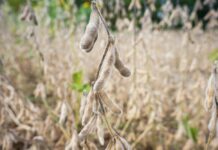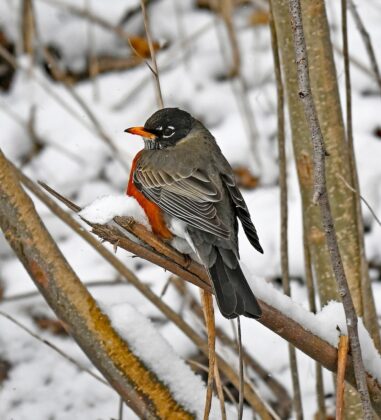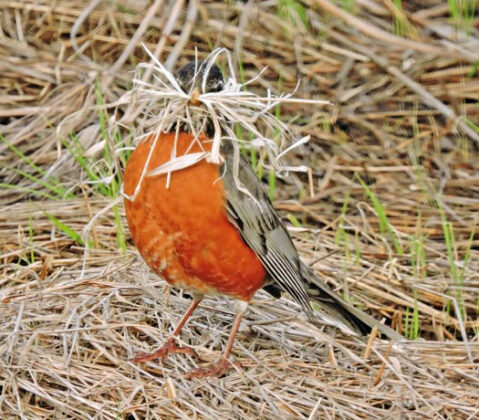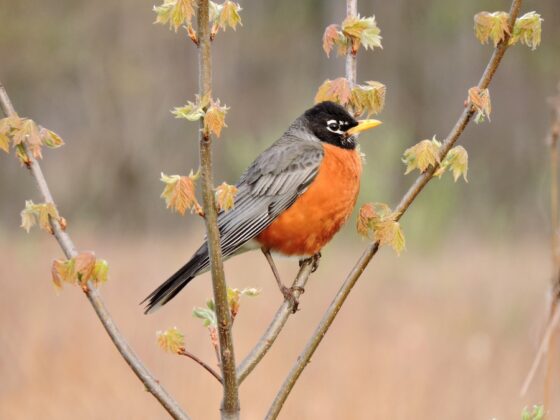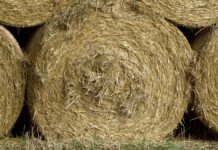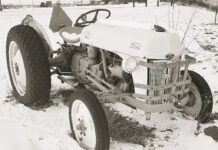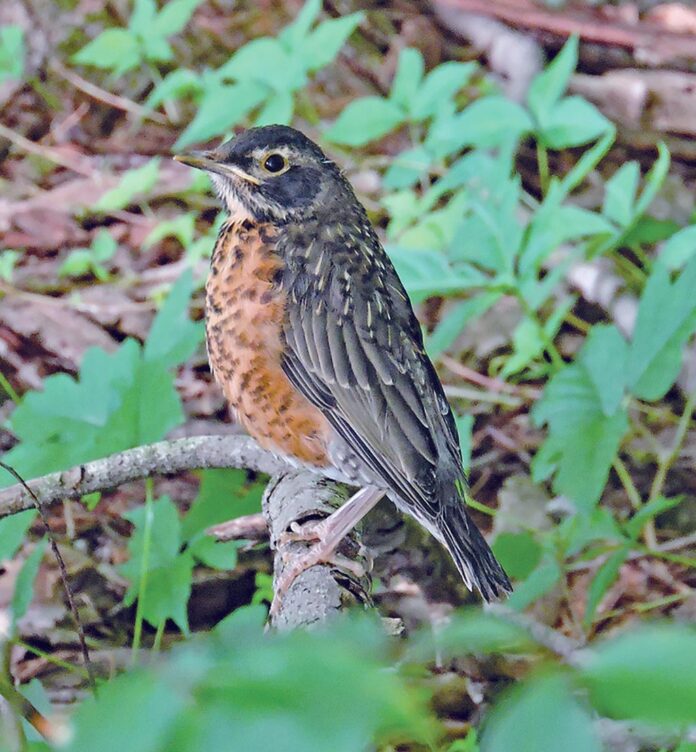
It’s hard to believe that “robin pie” used to adorn the menus of 19th-century American restaurants. A recipe from Wehman’s Cook Book published in 1890 reads as follows: “Cover the bottom of a pie-dish with thin slices of beef and fat bacon, over which lay ten or twelve robins, previously rolled in flour, stuffed as above, season with a teaspoonful of salt, a quarter ditto of pepper, one of chopped parsley and one of chopped eschalots, lay a bay-leaf over, add a gill of broth and cover with three quarters of a pound of half puff paste, bake one hour in a moderate oven, shake well to make the gravy in the pie form a kind of sauce and serve quite hot.”
Thankfully, it wasn’t long until this ghastly trend was ended, and the American robin was promptly listed as a protected species under the Migratory Bird Treaty Act. This act, created in 1918, was enacted to protect bird species from harm and possible extinction. It is one of the oldest wildlife protection laws, and today over 1,000 North American bird species grace its list.
When it comes to the robin, one of my biggest, cringe-worthy pet peeves is hearing someone say, “Oh, it’s just a robin.” What!? JUST a robin??? If you’ve ever uttered these words, let me enlighten you on just how special the robin really is.
Not just any bird
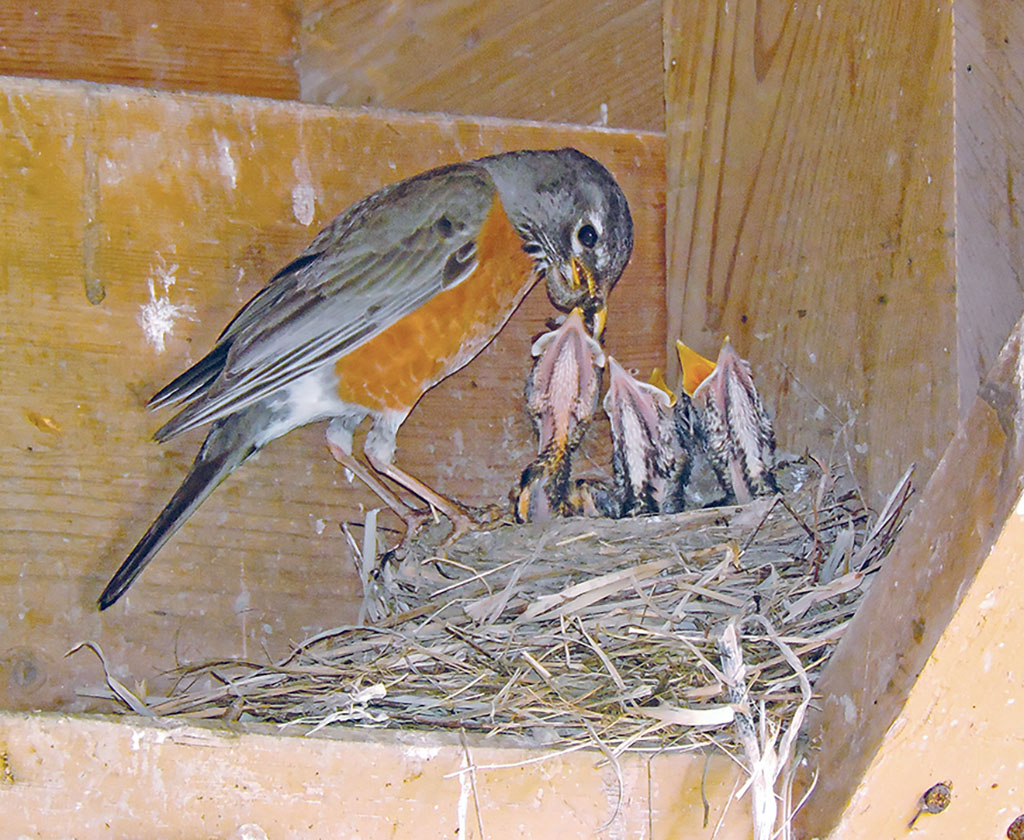
The robin (Turdus migratorius) isn’t just ANY bird. It’s a thrush. In fact, it’s the largest thrush species in North America. It joins its thrush cousins, the bluebirds and woodland thrushes such as Swainson’s thrush, wood thrush, veery, hermit thrush, among others, as being members of the most beautiful singers in the bird world.
Thrushes are known for their melodic, flute-like songs, which are most often sung at dawn and dusk. Thrushes can also be identified by their characteristic sky-blue eggs. Also, all thrushes are recognized by their spotted breasts. Ah, you say, but bluebirds and robins have solid-colored breasts. Well, if you’ve ever had a chance to get a close-up look at the baby birds after they have fledged from their nests, you will see that both species sport a spotted “sweatshirt,” the mark of the thrush family, that vanishes as the adult plumage arrives to take its place.
The American robin begins nesting very early in the spring and may successfully raise up to three broods throughout the summer. Males are quick to claim a territory, often engaging in eye-raising battles with other males. Females assume the construction of the cup-shaped nests, which have a thick base of mud adorned with dry grasses and lined with even finer materials.
Because of their adaptability to human activity, they often nest in proximity, giving us front row seats to their intimate baby-rearing antics. Robins will nest on virtually anything that will hold their heavy structure, and they specifically enjoy having a roof over their heads. A sturdy tree branch, a ledge, an eave, even a planter or the wreath hanging on a door, will all pass the test for acceptable nesting sites. You can help direct a robin to nest where you’d like it to by installing a nest platform, which they will readily utilize.
Although both sexes appear the same at a glance with their orange breasts and grayish backs, the males are much more vivid with their black heads, white eye rings and carrot-colored chests. Typically, robins lay four blue eggs, and it’s easy to tell when the young have hatched.
Robins are most often observed on the ground where they hop, hop, listen; hop, hop, listen. They tilt their heads while staring at the ground (a behavior known as “head-cocking”), then suddenly lunge downward, producing a squirming worm held tightly in their beak. Since it doesn’t make sense to take just one worm back to a nest full of hungry mouths, the robin continues to hunt and stuff its mouth with slimy prey, creating that iconic robin silhouette which everyone, I’m sure, has seen and recognizes.
I love looking into yards as I drive along and try to spot the resident robin in each one, often with such a mouthful of food. Robins also feed on other insects and invertebrates and happily come to mealworm feeders. Sadly, because of their worm and insect diet, many robins (and bluebirds) die, victims of lawn pesticide applications.
American robins used to be strictly migratory, departing for southern climes in the autumn and appearing back on their breeding grounds first thing in the spring. But the change in the climate, resulting in much milder winters, has resulted in a portion of the population remaining as year-round residents. Robins are big fruit and berry eaters, so as long as there are sufficient food supplies to sustain them throughout the colder months, they stand to gain the advantage of claiming the best nest sites for themselves before the migratory generation returns. Sadly, freak ice storms that encase their food, or severe, bitter snowstorms, may wipe out large flocks of robins as they frantically search for ways to stay alive.
The American robin is often referred to as a harbinger of spring. I can’t even describe the deep feelings I get when I hear the first robin of the year projecting its flutelike notes across the landscape. Not only that, but each individual robin has its own unique song, contributing to the beautiful crepuscular cacophony. Spring just wouldn’t be the same without that big, beautiful thrush belting out its glorious tune. JUST a robin??? I think not! This is one songbird that should never be taken for granted!





